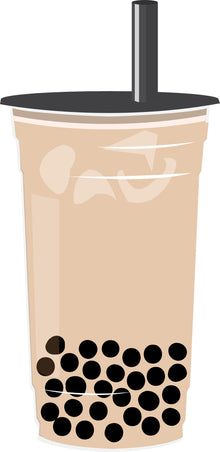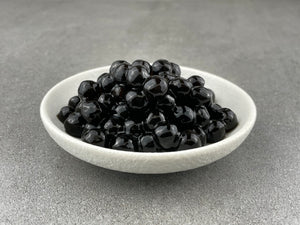What is Bubble Tea?
Bubble tea is a global phenomenon - and there are no signs of its popularity slowing. While it goes by a number of different names (including boba tea, milk tea, pearl tea, pearl milk tea, tapioca tea) "bubble tea" is the most common name and encompasses all the different flavours and varieties available.

Traditional bubble tea consists of black tea, milk or powdered creamer, ice and chewy tapioca pearls. It's served in a plastic cup with a thin plastic film lid that is heat sealed to the top. This keeps everything together while the bubble tea is shaken to combine the ingredients.
What are "pearls"?
The tapioca pearls (also known as "boba") are a key feature of bubble tea and are what makes bubble tea so much more than just a drink. They are round, chewy balls made from tapioca starch (this starch is gluten-free and comes from the South American cassava root). They sit at the bottom of the drink and are paradoxically classified as a "topping". Most commonly they are brown, however white and coloured pearls can also be found.
They are usually 8-10mm in diameter, so wide straws are needed to suck them and the drink up at the same time. Bubble tea straws that come with the drinks usually have a pointed tip which is used to pierce the film lid. If you don't get your "film piercing" technique right, results can be messy!
Chewing the pearls while also consuming the drink is what makes bubble tea so fun and unique.

While the drinks themselves were traditionally made using black or green teas as a base, today you'll find bubble teas in a variety of flavours that don't contain any tea at all.
So who first put tapioca pearls in their drink?
Originating in Taiwan in the 1980's, there are a few stories about how bubble tea was invented. One is of a product development manager for a chain of Taiwanese tea houses who poured the tapioca pearls from the dessert she was eating into her iced tea. This unusual combination was a hit with her co-workers and the tea house’s customers. Another account is of a tea house owner who was taken back to his childhood when rediscovering the small white tapioca pearls he’d loved when he was young. He added these to his drinks and later experimented with the larger, brown tapioca pearls that are common today.
What’s not in dispute is that bubble tea soon became popular all over Taiwan, and today it’s considered a Taiwanese icon.
Its popularity spread throughout Asia and as more people moved to the US, Canada, Australia, New Zealand and the UK, these immigrants introduced bubble tea to their new home countries.
The drink was originally called “bubble tea” due to the milky froth that forms when the drink is shaken, and “boba” is a slang term for tapioca pearls. Today, the term “bubble” is often used to refer to the tapioca pearls.
Bubble Tea in New Zealand
Bubble tea has been available in New Zealand for a number of years. It’s a popular alternative to coffee, juices and soft drink and was considered a “taste of home” for many overseas students. Kiwi travellers who experienced it overseas also loved being able to find it here. As more people became intrigued by the “drink in the plastic cup with the round balls at the bottom and the wide plastic straw” they decided to try it themselves. Today, bubble tea is an increasingly popular drink in NZ with people of all ages.
